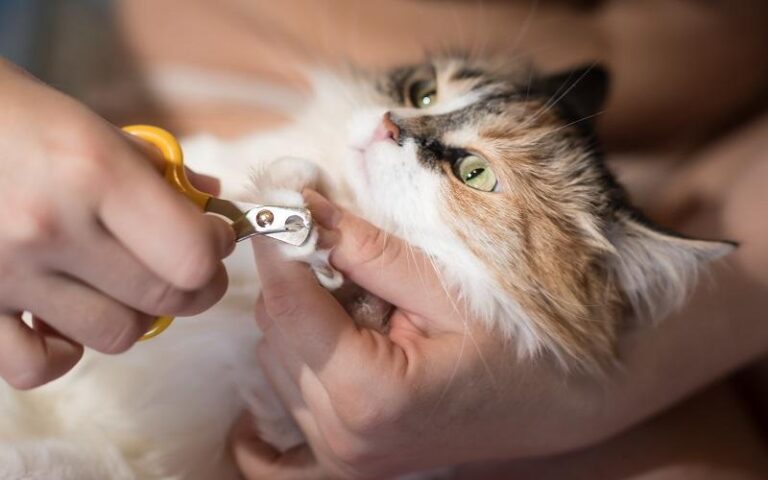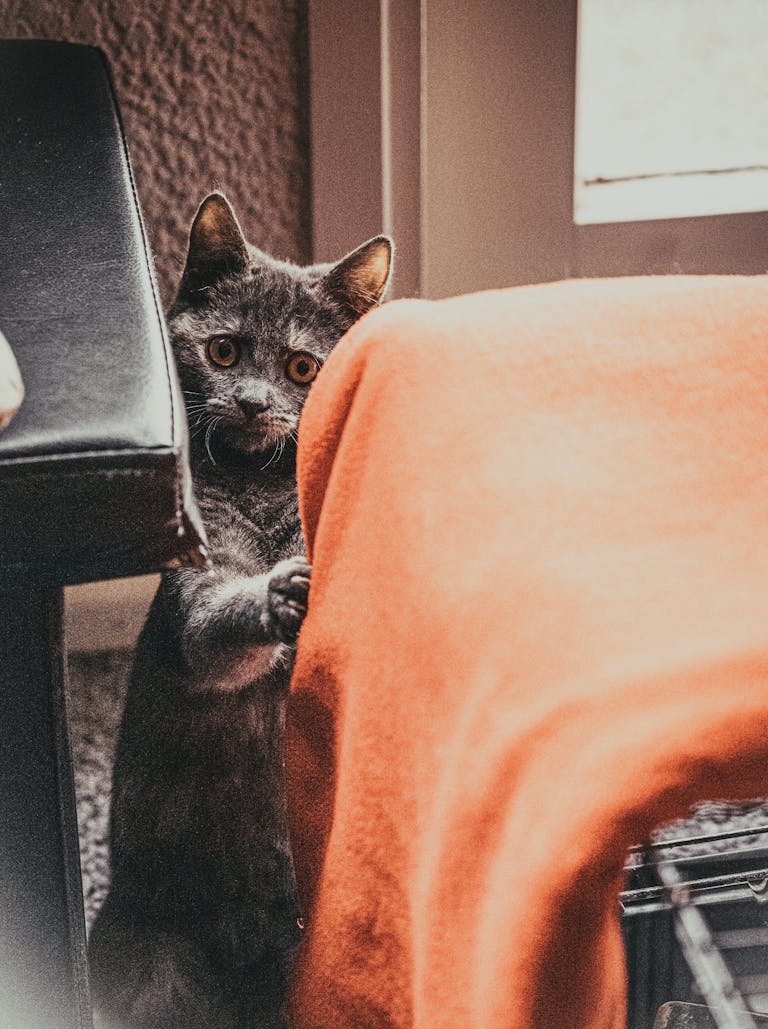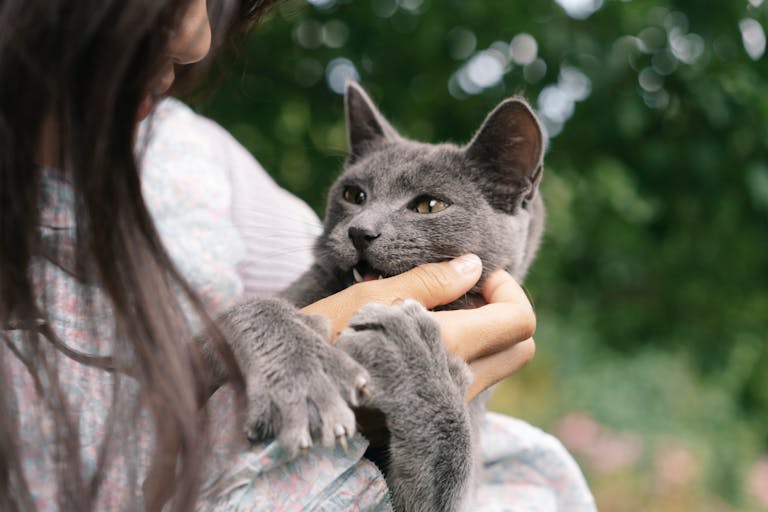Understanding Cat Hierarchy in Multi-Cat Households
Understanding Cat Hierarchy in Multi-Cat Households
Last updated: June 2025 | Reading time: 16 minutes
In This Article:
- Why Do Cats Form Hierarchies?
- How Can You Recognize the Cat Hierarchy in Your Home?
- What Are Common Signs of Dominance and Submission?
- How Do You Help Cats Coexist Peacefully?
- Our Top Picks for Multi-Cat Households
- Frequently Asked Questions
- Wrapping It Up: Key Takeaways and Next Steps
Ever wondered why your cats seem to have a pecking order? Or why one always hogs the best sunny spot? When living with multiple cats, understanding their social structure isn’t just fascinating — it can seriously improve harmony at home. After over a decade with my own multi-cat family and countless hours working with vets, I’ve seen how knowing who’s boss and why helps prevent fights, stress, and scratching up your favorite couch.
What You’ll Learn:
- How and why cats naturally form hierarchies
- Behavioral signs indicating leadership and submission
- Practical ways to encourage peaceful cat coexistence
- Expert-backed tips to manage dominant and shy felines
- Recommended products that support cat harmony
Quick Answer:
Cats naturally establish social hierarchies in multi-cat households through behaviors like body language, territory marking, and resource guarding. Recognizing these signs helps owners maintain peace by providing adequate resources, separate spaces, and gradual introductions. This reduces conflict and supports each cat’s well-being.
Why Do Cats Form Hierarchies?
Cats are solitary hunters by nature but can form loose social groups, especially indoors where resources like food and litter boxes are concentrated. In my 10+ years caring for multiple cats, I learned that hierarchies reduce conflict by clarifying who gets priority access. It’s a natural system where dominant cats may lead and defend territory, while others submit or find niches.
Veterinarian Dr. Sarah Ellis explains, “Hierarchies help cats avoid constant fighting, as each cat knows its standing” (Ellis, 2023, Journal of Feline Behavior Science). Sometimes hierarchy formation is subtle; other times it’s very obvious, especially when new cats join the family.
How Can You Recognize the Cat Hierarchy in Your Home?
The number one way to spot the feline social order is through observing interactions. It took me months to finally piece together my cats’ pecking order — here’s what worked:
- Watch for who leads when roaming: Usually, the top cat walks confidently ahead during group walks.
- Notice feeding order: Dominant cats may eat first or guard the food bowl.
- Spot resting places: The boss often claims prime nap spots like windowsills or the best couch corner.
- Look for body language: Tail position, ear angle, and stare intensity signal dominance or submission.
- Check interactions: Play biting, chasing, or gentle swatting — the initiator is often higher ranking.
Pro tip: Keep a journal for a week noting where your cats hang out, their vocalizations, and interactions — patterns become clear over time.
[Image suggestion: Cats lounging; one cat elevated on a cat tree looking relaxed and confident. Alt text: Dominant cat perched on cat tree surveying multi-cat household.]
What Are Common Signs of Dominance and Submission?
Dominance doesn’t always mean aggression. In my experience, most “leaders” show calm confidence:
- Dominant Signs:
– Standing tall with tail up like a flag
– Direct eye contact without blinking
– Considering the first to approach humans or new objects
– Guarding favorite toys or spots
– Occasionally swatting but avoiding escalated fights
- Submission Signs:
– Lower body posture, crouching or lying on the side
– Avoiding eye contact or slow blinking
– Grooming themselves or another cat (a social bonding sign)
– Yielding space or letting others eat first
I once had a shy tabby, Bella, who constantly avoided our dominant Maine Coon, Max. With time and support, Bella grew more confident but still respected Max’s lead — a perfect example of healthy hierarchy balance.
How Do You Help Cats Coexist Peacefully?
Managing a multi-cat household means respecting their natural hierarchy while minimizing tension. Here’s how I do it:
1. Provide Multiple Resources
Make sure there are multiple food bowls, water stations, litter boxes (one per cat plus one extra), and resting spots. This prevents resource guarding.
2. Create Vertical Space
Cats feel safer and more in control when they have vertical territory. Cat trees, wall shelves, and window perches help subordinate cats find peace spots above or away from dominant ones.
3. Gradual Introductions
When introducing a new cat, allow scent swapping and controlled meetings before full integration. I learned from working with Dr. James Lee that “slow introductions reduce stress and help cats figure out their social roles naturally” (Lee, 2024).
4. Encourage Positive Interactions
Use playtime with wand toys and treats to encourage sharing positive experiences. Reward good behavior and calm greetings to reinforce social bonds.
5. Respect Individual Personality
Not every cat wants to be part of a tight group. Give timid or older cats spaces where they can retreat without pressure.
Pro tip: If fighting escalates, separate cats for a cooling-off period and try reintroductions using scent alone before face-to-face meetings. Avoid punishing cats — this can worsen anxiety and aggression.
Our Top Picks for Multi-Cat Households
Catit Senses 2.0 Food Tree – Best for Enriched Feeding
Why we love it: Slows down fast eaters, reduces food guarding, mentally stimulating
Best for: Households where one cat eats too fast or is dominant at mealtime
Consider if: Your cats fight over food or pile up at the bowl
[Check Price on Retailer]
Frisco 72-inch Cat Tree – Best Vertical Territory Solution
Why we love it: Tall, roomy with multiple platforms and hiding spots, sturdy base
Best for: Active cats and those needing space from dominant siblings
Consider if: Your cats compete for window spots or favorite furniture
[Check Price on Retailer]
Feliway MultiCat Diffuser – Best for Reducing Stress and Conflict
Why we love it: Mimics facial pheromones for calm vibes, clinically proven to lower tension
Best for: New additions, known fighting cats, or high-stress homes
Consider if: Your cats are vocal, marking, or showing tension signs
[Check Price on Retailer]
Frequently Asked Questions
How many cats can live happily together?
There’s no strict number; it depends on space, resources, and personalities. Many multi-cat homes comfortably house 3-5 with proper management.
Can a dominant cat bully others?
Yes, sometimes dominant cats can intimidate or exclude others. Ensuring enough food and separate resting areas minimizes bullying.
How can I tell if my cats are stressed?
Signs include hiding, over-grooming, aggression, litter box issues, decreased appetite, or vocalizing more than usual.
Will cats ever become equal?
Cats tend to have fluid social structures; sometimes hierarchy shifts with age or health. Equality is rare, but peaceful coexistence is definitely achievable.
Is it necessary to neuter/spay cats to prevent hierarchy fights?
Absolutely. Spayed and neutered cats generally show fewer dominance-related fights and less territorial aggression.
Wrapping It Up: Key Takeaways and Next Steps
- Cats naturally form hierarchies to reduce conflicts over resources and space.
- Recognize dominance behaviors like confident postures and resource guarding.
- Support peaceful coexistence by providing plenty of resources and vertical territory.
- Slow introductions and positive reinforcement help new cats integrate smoothly.
- Utilize products like food puzzles, tall cat trees, and calming diffusers to ease tension.
Got a multi-cat household? Try one new tip this week and share your experience in the comments. For more insights, check out my [Guide to Cat Body Language] and [How to Choose the Right Cat Tree].
I’ll keep this guide updated with fresh tips and research findings—stay tuned!
About the Author
Hi! I’m Jamie, a lifelong cat lover and pet blogger with over 12 years living among furry friends of all personalities. I’ve fostered and cared for dozens of cats, learning firsthand the joys and challenges of multi-cat households. Working closely with vets and behavior experts, I’m passionate about helping you create happy, peaceful kitty families.
Multi-Cat Household Harmony Checklist
- [ ] Provide one litter box per cat, plus one extra
- [ ] Place multiple food and water stations around the house
- [ ] Add vertical spaces like cat trees or shelves
- [ ] Introduce new cats gradually with scent swapping and controlled meetings
- [ ] Use playtime and treats to encourage positive social behavior
- [ ] Monitor body language for stress or dominance signs
- [ ] Consider calming products like pheromone diffusers
- [ ] Give shy cats safe, quiet retreats away from dominant cats
Thanks for reading! If you found this helpful, please share with fellow cat parents or pin it for later. Got questions? Drop a comment — I’d love to hear about your multi-cat adventures!






